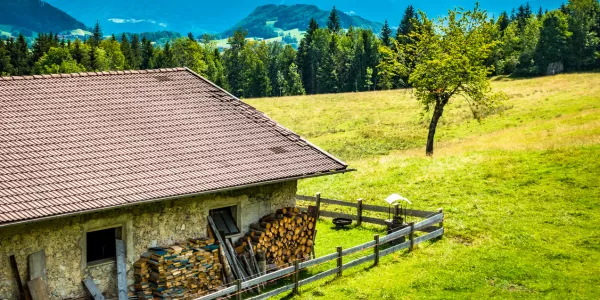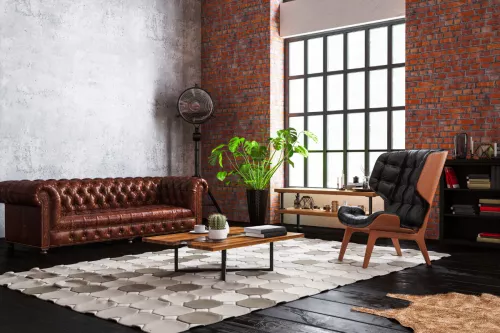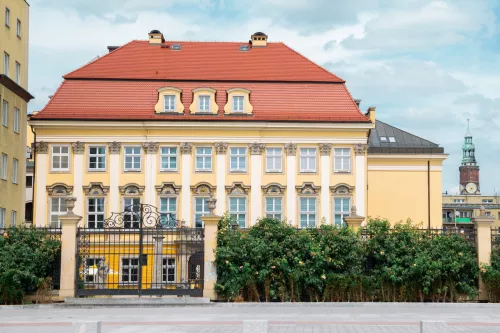The rustic charm of farmhouse homes has not only captured the imagination of many but has also become a symbol of simplicity, warmth, and a deep connection with nature. Beyond being a mere design trend, the farmhouse aesthetic represents a lifestyle choice that prioritizes simplicity and the essentials of home living.
Known for its stylish yet comfortable appeal, this design philosophy exudes an inviting warmth that has seen a surge in popularity recently. Understanding the farmhouse style involves more than just recognizing its visual appeal; it's about comprehensively understanding its core design elements and principles.
This knowledge is crucial for anyone looking to bring the unique and cozy ambiance of farmhouse living into their own spaces.
What Makes a Farmhouse Home?
Farmhouses, even if not located on active farms, typically sit on spacious plots with abundant outdoor areas. Porches are a key architectural feature, serving as practical spaces for farmworkers to clean up before entering the home. These porches vary widely in design, including covered, screened-in, and extensive wraparound styles, reflecting the diverse and unstandardized nature of farmhouse designs.
Inside, the farmhouse aesthetic is understated, emphasizing functionality with exposed wood and minimal decoration. The layout traditionally features larger, more formal rooms at the front for entertaining, with smaller, informal living and dining spaces towards the back.
The kitchen stands out as a central element, spacious and well-appointed, often accompanied by a hearth room, open fireplace, and pantry in older versions. Modern farmhouses maintain this focus with large islands, substantial wooden or open shelving, and space for a big dining table.
Unlike homes with basement foundations, older farmhouses may have only crawlspaces or a simple cellar. The attic, originally for storage, is now commonly converted into living spaces in contemporary renovations.
Key characteristics of farmhouse-style homes include a simple, practical design with one or two stories, rectangular or square floor plans, and natural materials like wood and stone. The exteriors boast large, functional porches and pitched roofs with dormers, while interiors feature fireplaces, large formal rooms at the front, cozy bedrooms, and expansive kitchens, alongside the potential for converted attic spaces.
A Brief History of Farmhouses

The farmhouse style, originating in Europe, was crafted to meet the needs of agricultural families, evolving from mere functional structures into homes that embody simplicity and functionality. As this architectural style crossed the Atlantic, it adapted to America's diverse climates and vast landscapes, incorporating local materials and construction methods.
This adaptation led to the emergence of various regional farmhouse styles across America, each reflecting its unique environment yet sharing the foundational ethos of practicality and straightforward design.
The transition of the farmhouse style into the American setting was marked by significant developments, particularly with the advent of cross-country railroads in the mid-19th century. This innovation facilitated the transportation of diverse building materials, enabling farmhouses to evolve beyond the constraints of local resources.
Early American settlers, often building their homes without the aid of architects, utilized whatever materials were available, from mud and logs to locally quarried stone. The newfound ability to import lumber, bricks, and other materials allowed for greater diversity in farmhouse construction, reflecting the skills and cultural backgrounds of various immigrant groups, such as the masonry prowess of German settlers.
This period of transformation underscored the farmhouse's adaptability and continued commitment to practicality, even as it integrated new influences and materials.
What Are Farm Style Houses Called?
Farm style houses are also called “folk houses”, and they encompass a range of designs, including the classic American farmhouse, the French Country house, and the more modern interpretations like the Scandinavian-inspired farmhouses. Each style reflects its cultural and geographical influences, yet all maintain the core principles of farmhouse design: simplicity, functionality, and a connection to nature.
Is Farmhouse Style Going Out?
Contrary to the fleeting trends in home design, the farmhouse style has demonstrated remarkable endurance. Its timeless appeal lies in its versatility and ability to adapt to contemporary needs while retaining its rustic charm. The modern farmhouse, with its blend of traditional elements and contemporary design, is a testament to the style's evolving nature and enduring popularity.
Pros and Cons of Farmhouses
Living in a farmhouse offers a distinct lifestyle characterized by its own set of benefits and potential drawbacks. Here is a more detailed look at the pros and cons:
Pros
Connection to Nature
Farmhouses are typically situated amidst expansive natural settings, providing breathtaking views and a tranquil environment. This close proximity to nature allows for activities like gardening, hiking, and other outdoor pursuits, fostering a deeper appreciation for the environment.
Spacious Layouts
With their open floor plans, farmhouses are designed to accommodate large families or gatherings comfortably. The spacious kitchens serve as the heart of the home, often equipped with large islands and ample room for dining and socializing, making them perfect for entertaining.
Timeless Aesthetic
The aesthetic appeal of farmhouses is characterized by their rustic elegance, which includes features like exposed beams, wood floors, and vintage fixtures. This style offers a warm and inviting atmosphere that remains appealing regardless of current design trends, ensuring a lasting charm.
Privacy and Quiet
The typically rural or semi-rural location of farmhouses affords a level of privacy and quiet that is hard to find in urban settings. This can lead to a more relaxed lifestyle, away from the hustle and bustle of city life.
Cons
Maintenance
The charm of traditional materials and architectural features comes with the need for regular maintenance. Wood, stone, and other natural materials may require more care to preserve their appearance and functionality, potentially leading to higher upkeep costs.
Location
The idyllic rural settings of farmhouses, while part of their allure, can also mean greater distances from urban centers. This could result in longer commutes to work, schools, and access to specialized healthcare, shopping, and entertainment options.
Energy Efficiency
Older farmhouses may not have been built with energy efficiency in mind, which can lead to higher heating and cooling costs. Retrofitting these homes with modern insulation, windows, and HVAC systems can be costly and challenging.
Infrastructure and Services
Living in a more remote location may impact the availability and reliability of services such as high-speed internet, public utilities, and emergency services, which can be a significant consideration for those accustomed to urban conveniences.
Difference Between Farmhouse and Farmhouse Decor
It's essential to distinguish between the architectural style of a farmhouse and farmhouse decor. The former refers to the structure's design and construction elements rooted in functionality and simplicity.
In contrast, farmhouse decor involves the interior and exterior styling that incorporates rustic, vintage elements, natural materials, and a cozy, welcoming ambiance. While farmhouse decor can be applied to any home, a true farmhouse also embodies the architectural and lifestyle elements of rural living.
People also ask
Can I incorporate farmhouse style in an urban home?
Absolutely! Farmhouse decor's versatility means you can bring the rustic charm and warmth of farmhouse style to any setting, even in the heart of the city.
How do I modernize a traditional farmhouse?
Modernizing a farmhouse can involve updating the interior spaces with contemporary conveniences while retaining the architectural charm. Think open-plan living, modern appliances, and sleek finishes that complement the rustic elements.
Are farmhouses energy-efficient?
While traditional farmhouses may not have been built with energy efficiency in mind, many modern farmhouses incorporate sustainable practices, energy-efficient appliances, and eco-friendly materials, marrying the best of old and new.

 Marcio Vasconcelos
Marcio Vasconcelos





